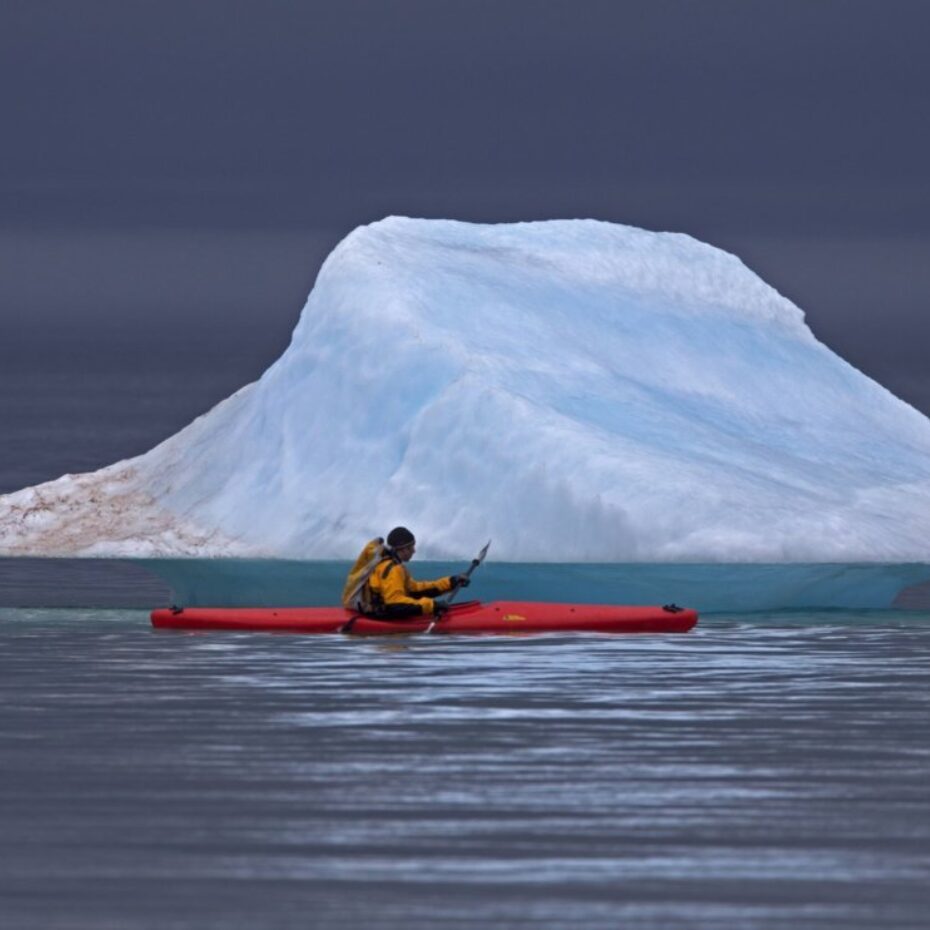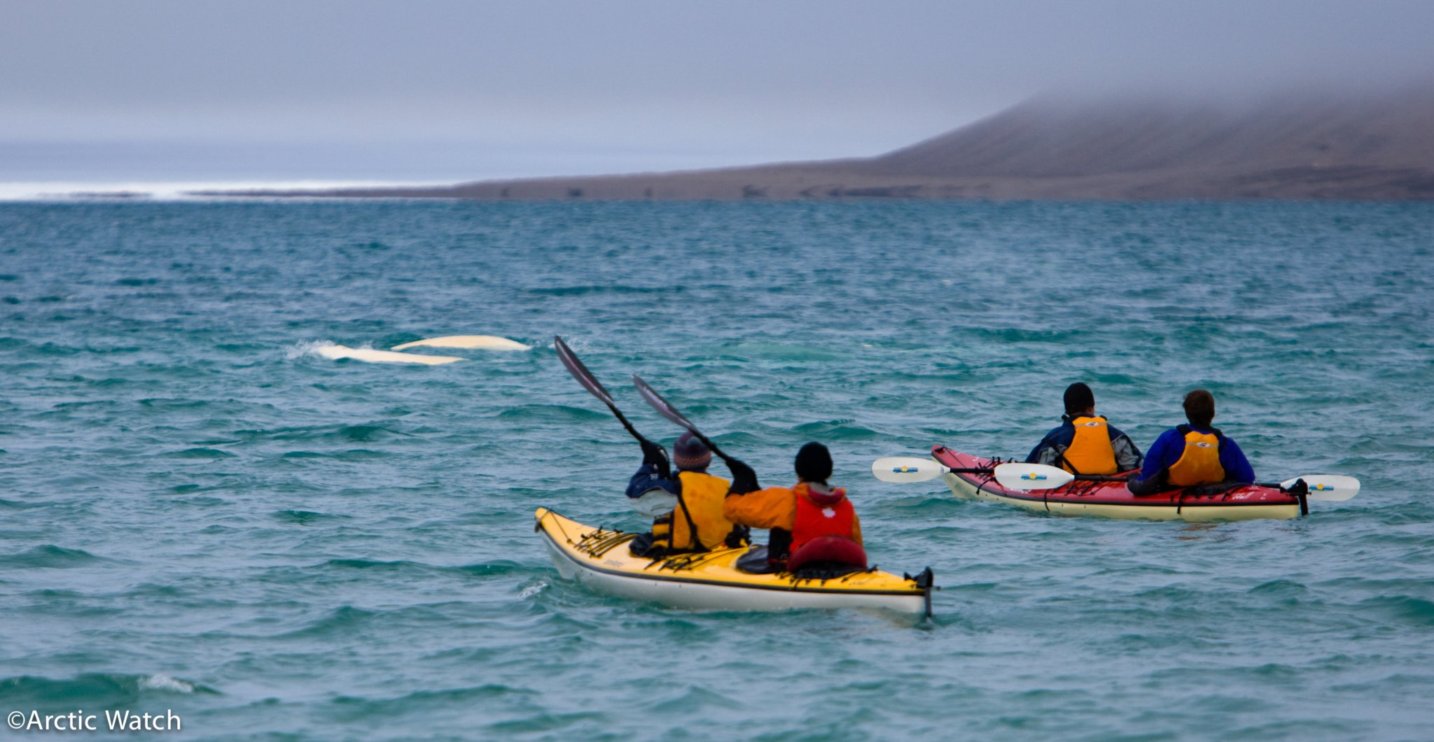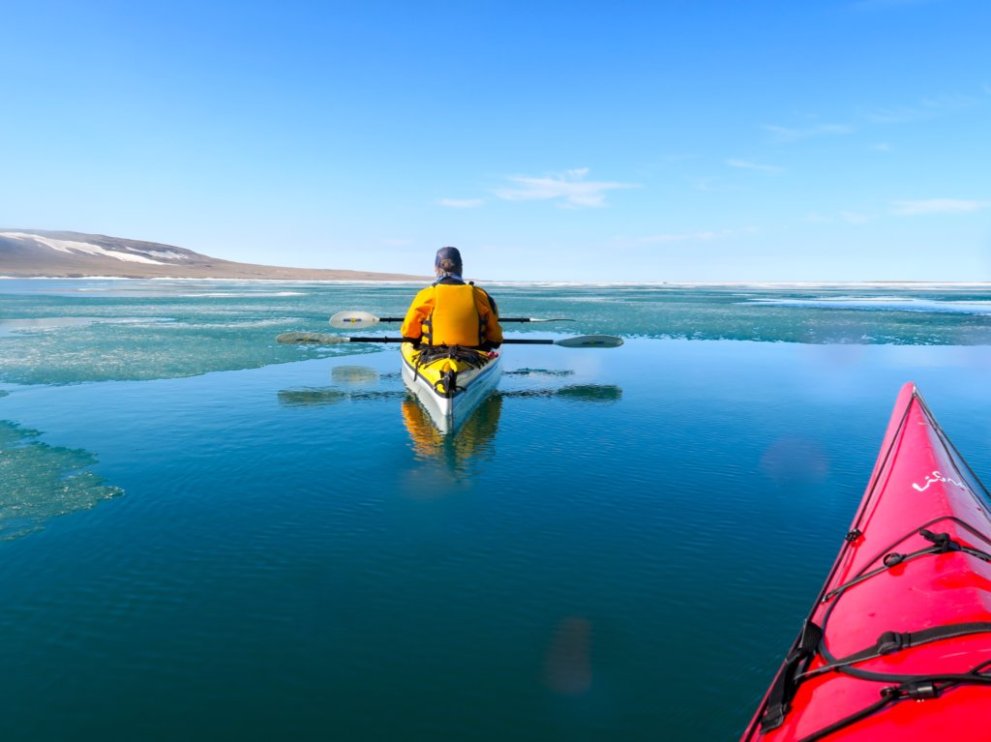
February 06, 2020 | Arctic Watch
KAYAK THE ARCTIC OCEAN JUST AS THE INUIT DID
A brief history of the kayak and how to have a genuine kayaking experience with us on the Arctic Ocean.
Kayaking, from cottage leisure fun to an Olympic sport, has come a long way from its humble arctic beginnings. Did you know that kayaks were invented by the Thule (Inuit) people that inhabited Northern Canada (Including Somerset Island), Greenland, Alaska, and Siberia? In fact, kayak is Inuktitut for “hunters boat”. We love our “hunters boat” for navigating the Arctic Ocean encompassing Arctic Watch.

These long, skinny boats were crafted out of a whalebone or driftwood frame that was then wrapped in sealskin. The Inuit then applied a layer of whale fat to the seal skin as a final water repellent. Aside from replacing the seal skin with hard plastic, modern kayaks have an almost identical design. Although these boats were designed to hold a single hunter, they often carried entire families. This is quite impressively portrayed in Robert Flaherty’s “Nanook of the North” (1922) as an entire Inuit family emerges from within a modest-sized kayak. If you haven’t seen it yet, Flaherty’s documentary that follows a nomadic Inuit family in their traditional methods is an incredible portrayal of the ingenuity and toughness required to survive in these Northern environments. We suggest watching this documentary before your trip to Arctic Watch to get a better understanding of how humans were able to survive in this area prior to modern technology.
Hunting from these seemingly unstable boats was not an easy feat. The Inuit needed another trick up their caribou parka sleeve in order to take down 3000lb walruses and speedy seals. Inuit ingenuity is manifested best in their seal skin float hunting method. Inuk hunters filled seal skins with air and sewed them closed as a sort of ‘buoy’. These seal skin floats were then attached to spears so that when hit, the animal couldn’t dive back down to the ocean floor. Instead, they were held up by the float, allowing the hunter to retrieve it.
To see it in action, follow this link portraying the traditional method during an Inuit walrus hunt.

Now, hundreds of years later, we are using a slightly improved but very similar kayak in the very waters that it was invented in. Arctic Watch Wilderness Lodge is nestled in the Cunningham Inlet on the Arctic Ocean. This is a great place to embark on a paddle through history as you take your kayak through the unspoiled waters of the high arctic - untouched by the industry that has taken over the south. Take these moments to unplug and unwind from this city bustle. You will notice playful belugas dart around you, curious seals investigate you, and the majestic landscape that surrounds you. This land was home to some and the conquest of others. Look across the Northwest Passage and imagine the many perilous expeditions that fought to conquer it. Maybe this is why we get to appreciate this land uninterrupted; the arctic fights hard to keep its wild character. It is not meant to be conquered - only appreciated.

To come paddle with us in the birthplace of the kayak, check out our Arctic Watch Discovery Experience or our Ultimate Arctic Expedition.
Written by: Donny Boake
We're here to help.
We understand that booking a trip like this is a big endeavour. Please reach out to us with any questions that you might have regarding your upcoming adventure.



